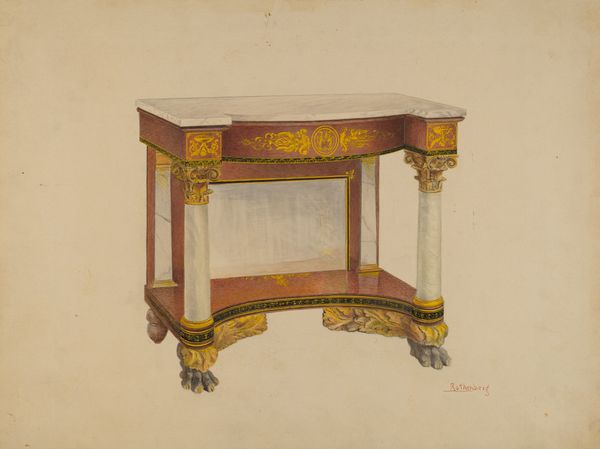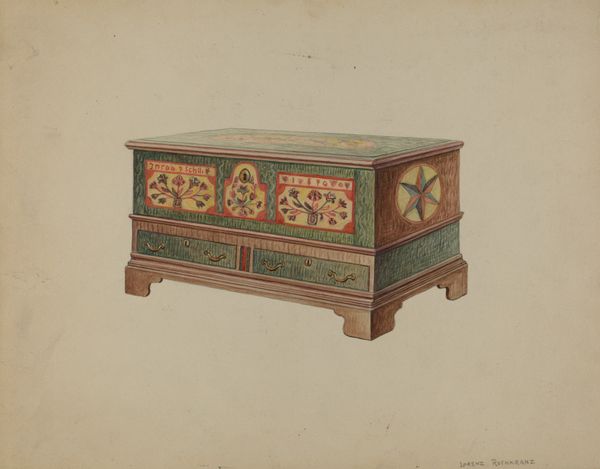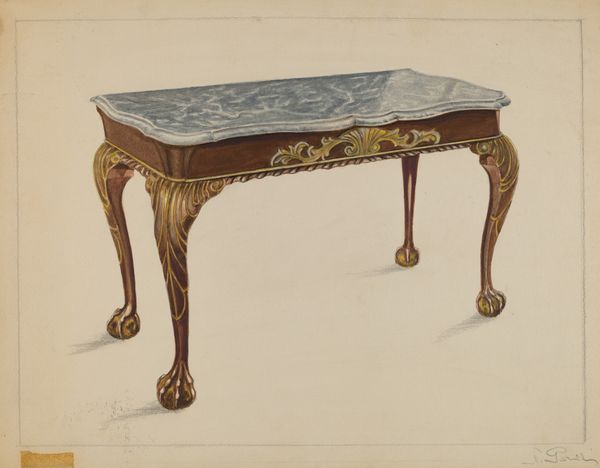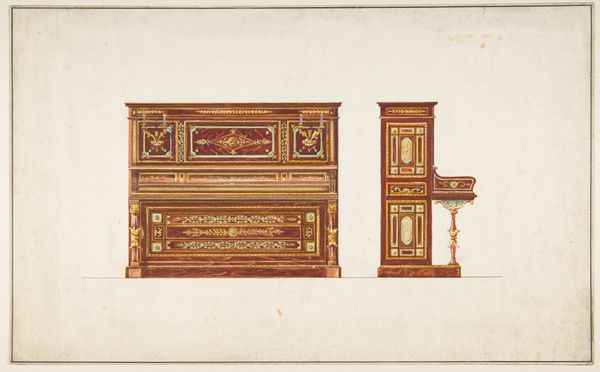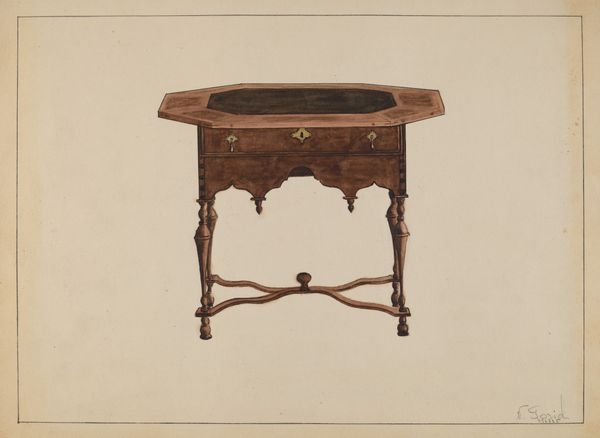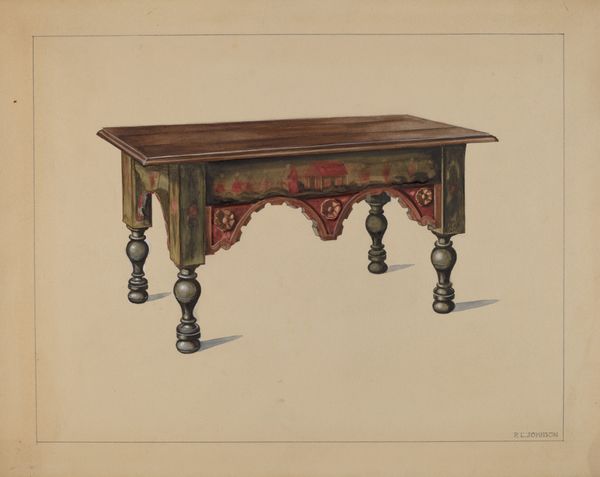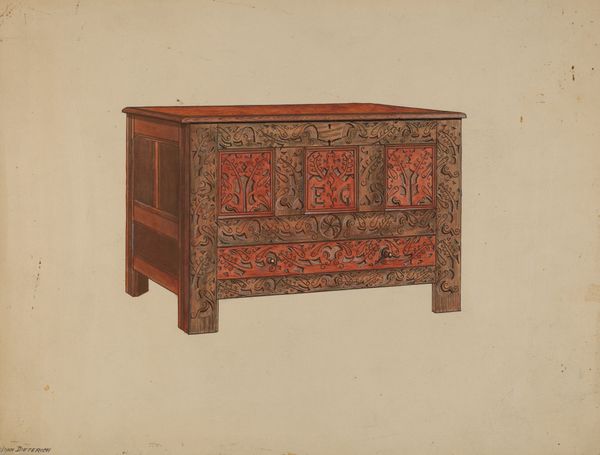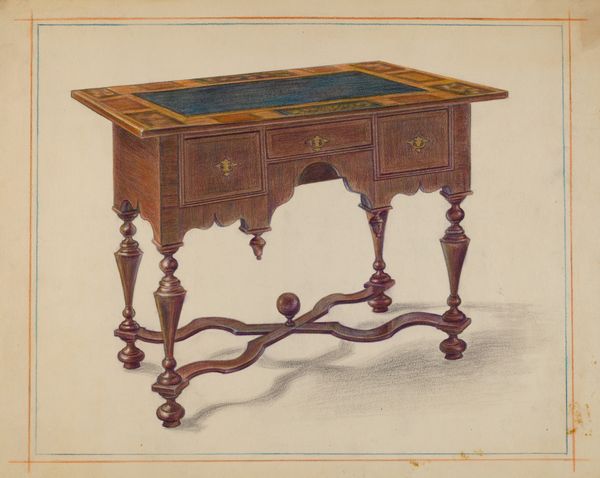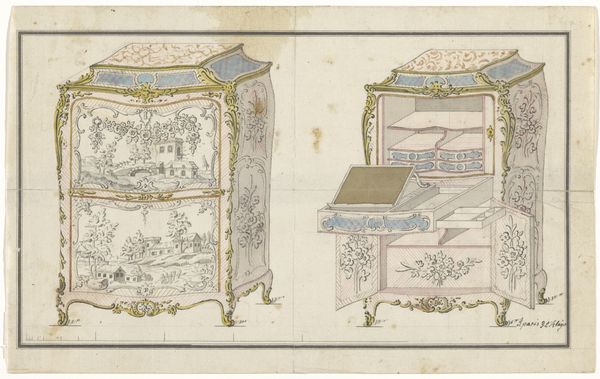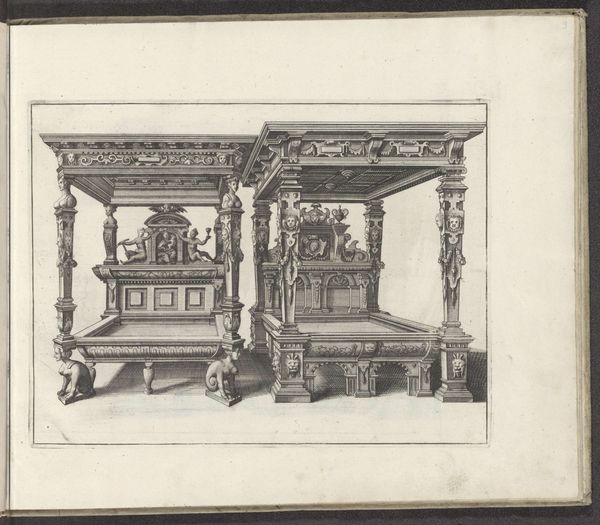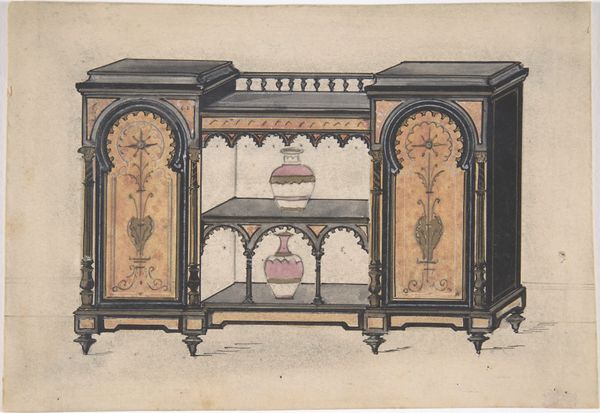
drawing, watercolor
#
drawing
#
water colours
#
watercolor
#
decorative-art
#
watercolor
Dimensions: overall: 22.9 x 29.2 cm (9 x 11 1/2 in.) Original IAD Object: 36 3/4" high; 42" wide; 19" in diameter
Copyright: National Gallery of Art: CC0 1.0
Curator: Here we have Ferdinand Cartier's "Console Table," a watercolor drawing dating to around 1953. Editor: My immediate reaction is… opulent. But rendered so delicately. It almost feels like a fleeting dream of luxury. Curator: Absolutely. Now, if we look at the historical context, post-war designs often saw a yearning for the extravagance of previous eras, especially within the decorative arts. This drawing offers us insight into the furniture trends, how they signified class aspirations through form, detailing, and craftsmanship during the period. Editor: I agree. Focusing on materials, even in the imagined form as a drawing, tells us so much. The use of watercolor softens the potentially bombastic qualities of a console table of this design; we have the marble, the gilded carvings, the classical columns rendered in muted colors. The claw feet especially—a powerful status symbol rooted in centuries of material culture are, ironically, less forceful given the artist’s media choice. What implications does that decision around artistic media have on the intended creation? Curator: An important question! It presents a fascinating tension, doesn't it? Watercolor, with its association with leisure and the domestic sphere, mediates this display of wealth. It highlights the contradictions inherent in post-war consumerism. Editor: It is fascinating to consider the means of production too. As a sketch rather than the actual object, how did this drawing circulate, and to what degree did Cartier and those viewing the drawing consider how gender and access were embedded in these luxurious decorative programs? Curator: That layers in a key dimension about accessibility. What would you put in such a conversation starter? What stories could the objects placed here, speak about those connected to it? Editor: For me, viewing this through the lens of labor and its representation complicates our ideas around status and accessibility in a helpful way. The drawing points towards the handcrafted nature and all that’s omitted from traditional narratives of glamour. Curator: It really underscores the cultural and historical dialogue woven into decorative arts of the time! I'm taking a different approach to decorative arts going forward after our discussion. Editor: Absolutely, seeing the materials and implied processes makes you rethink value on display, what materials are there and, crucially, what the objects tell the stories of the maker, or of its owners. Thank you!
Comments
No comments
Be the first to comment and join the conversation on the ultimate creative platform.
